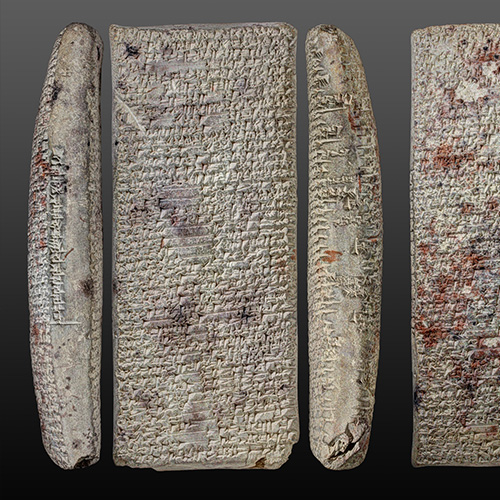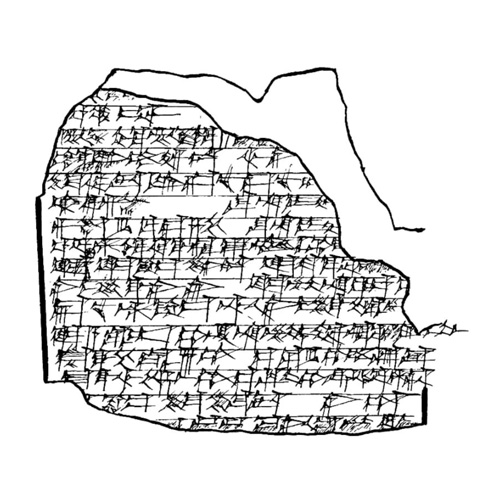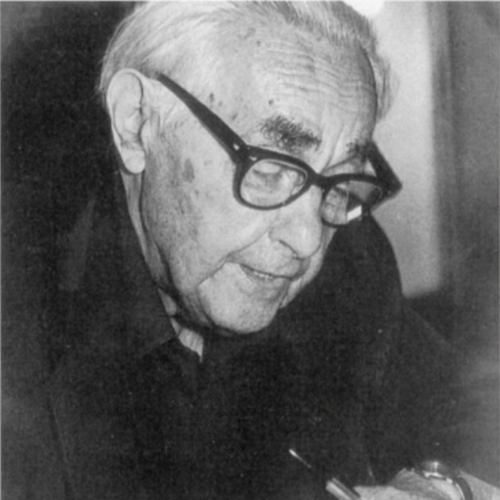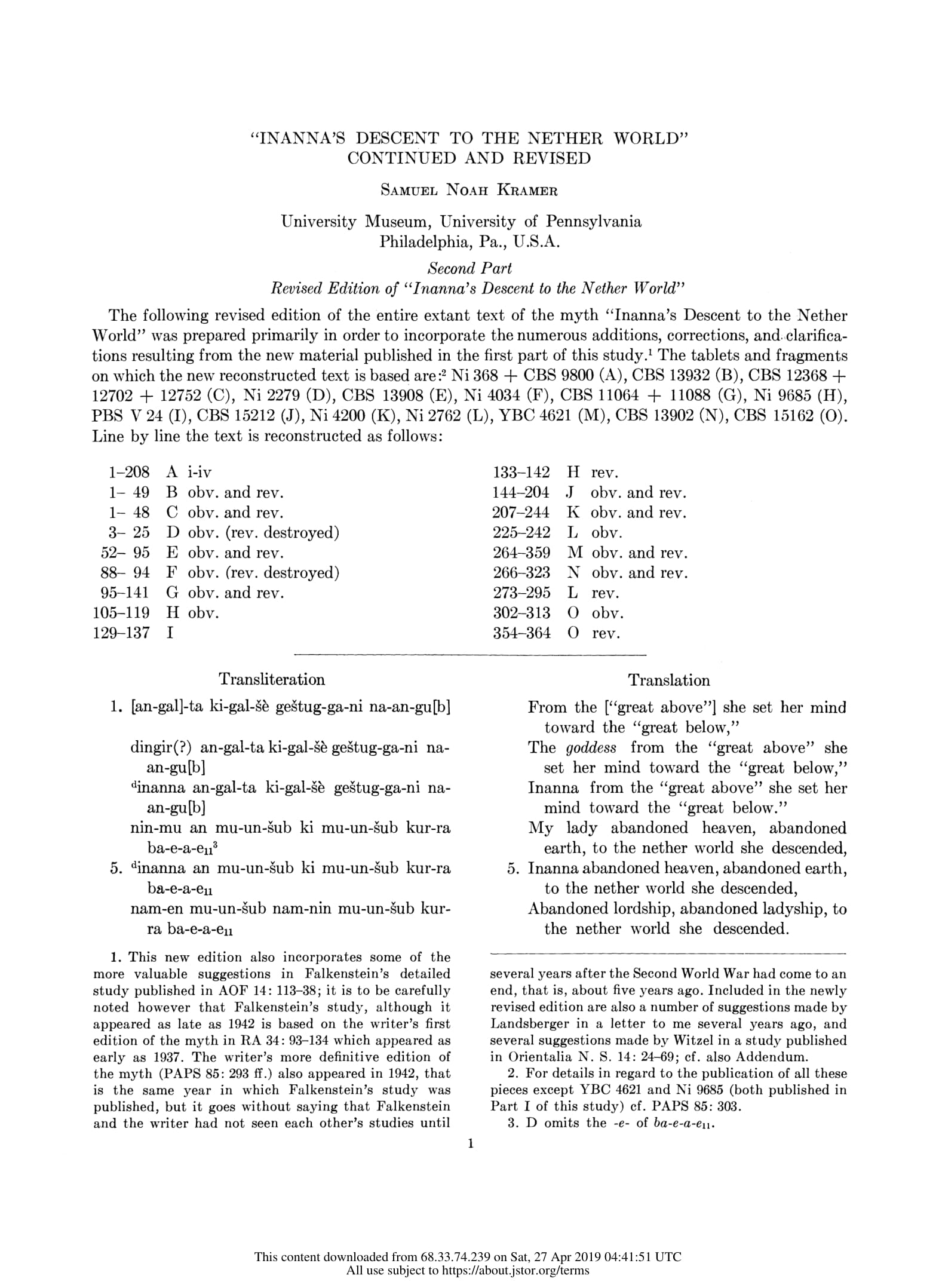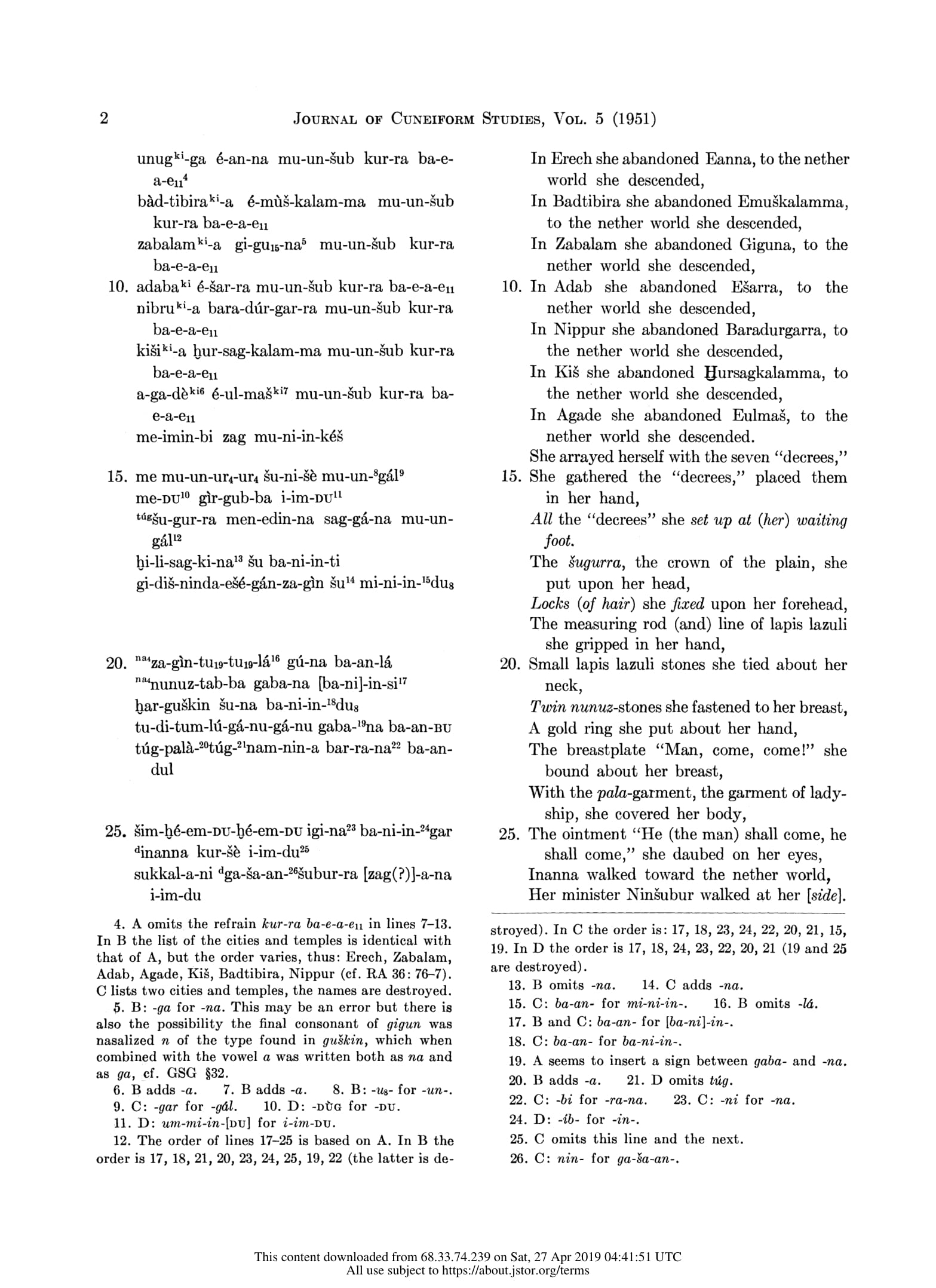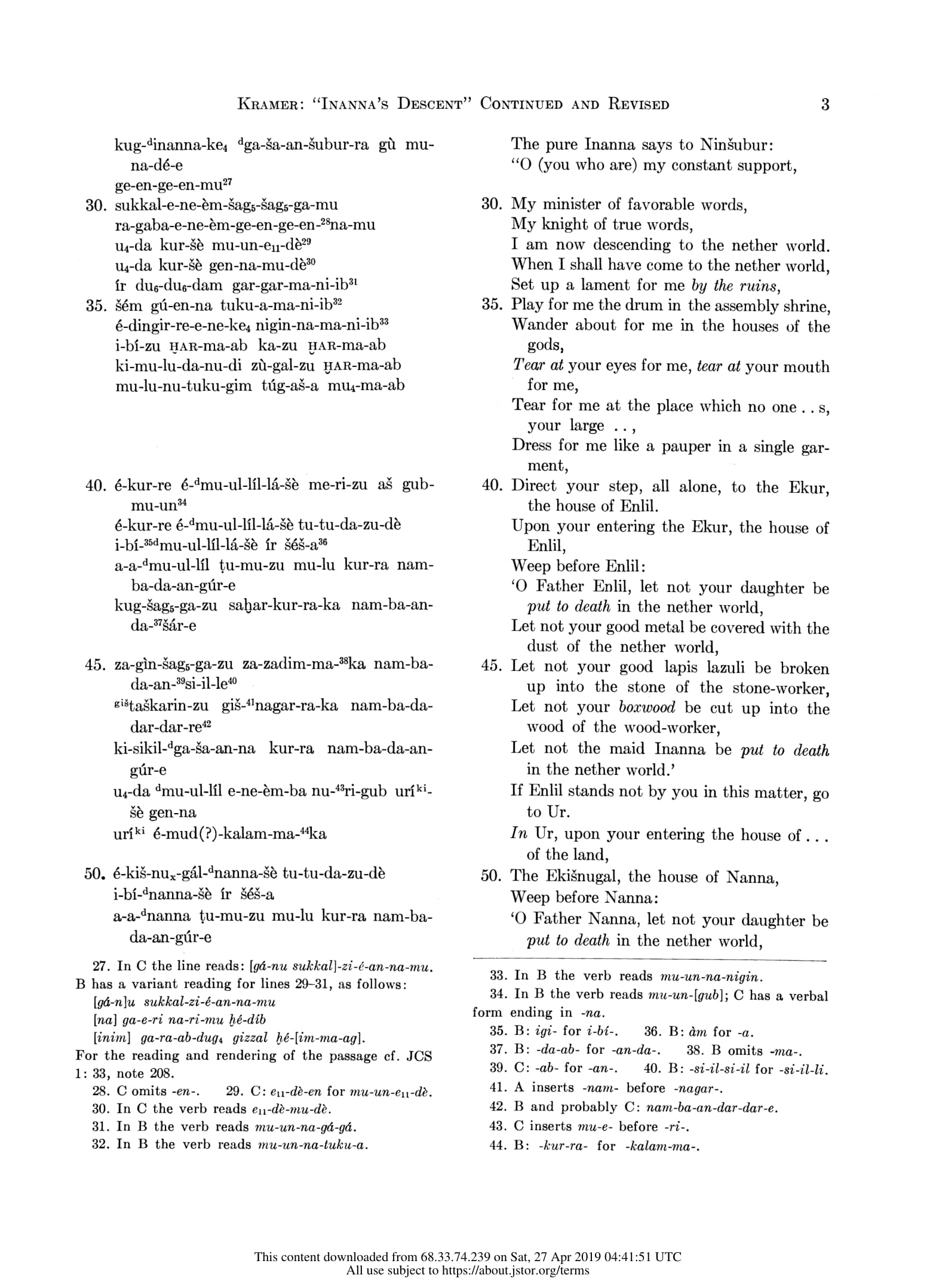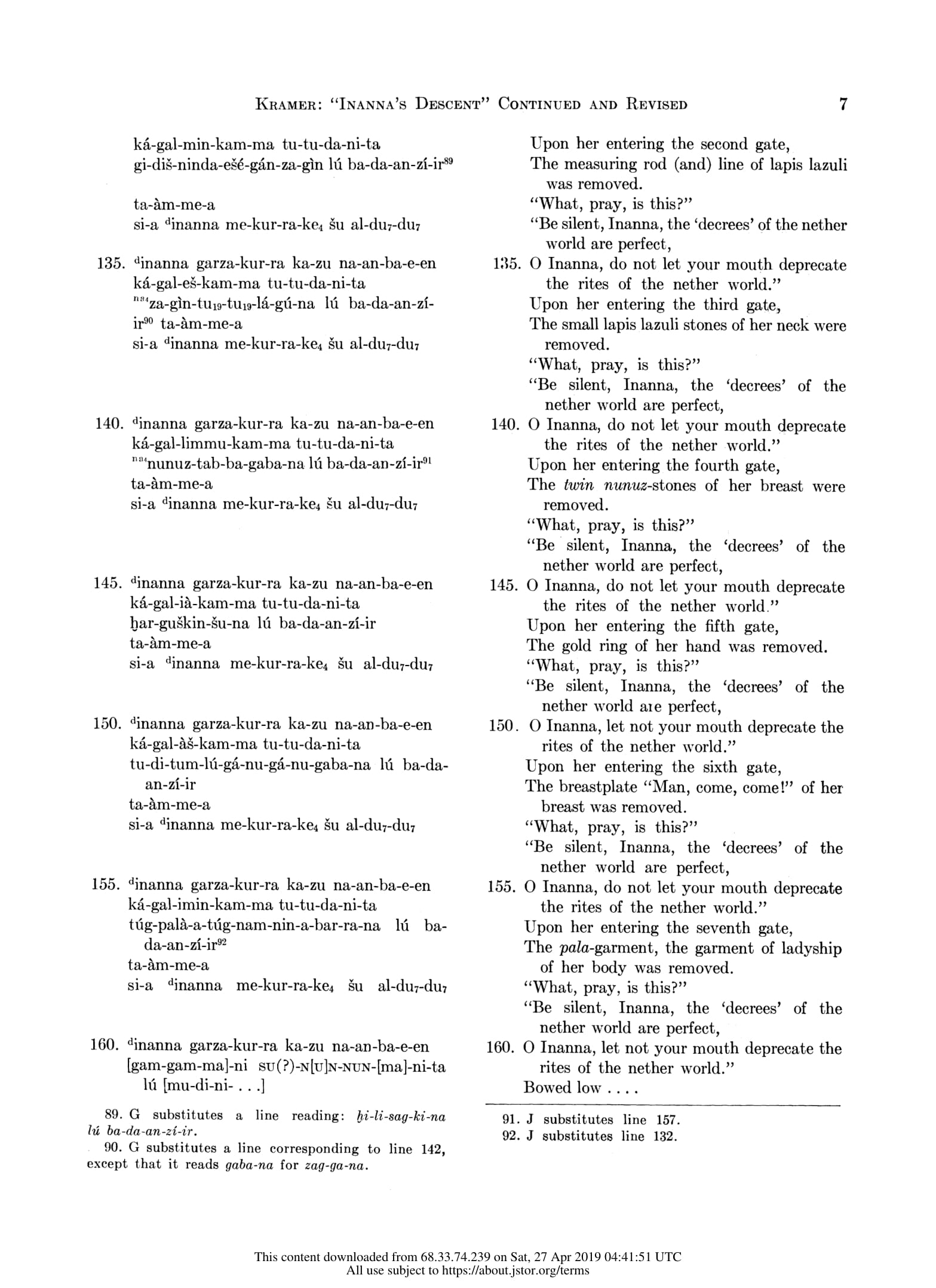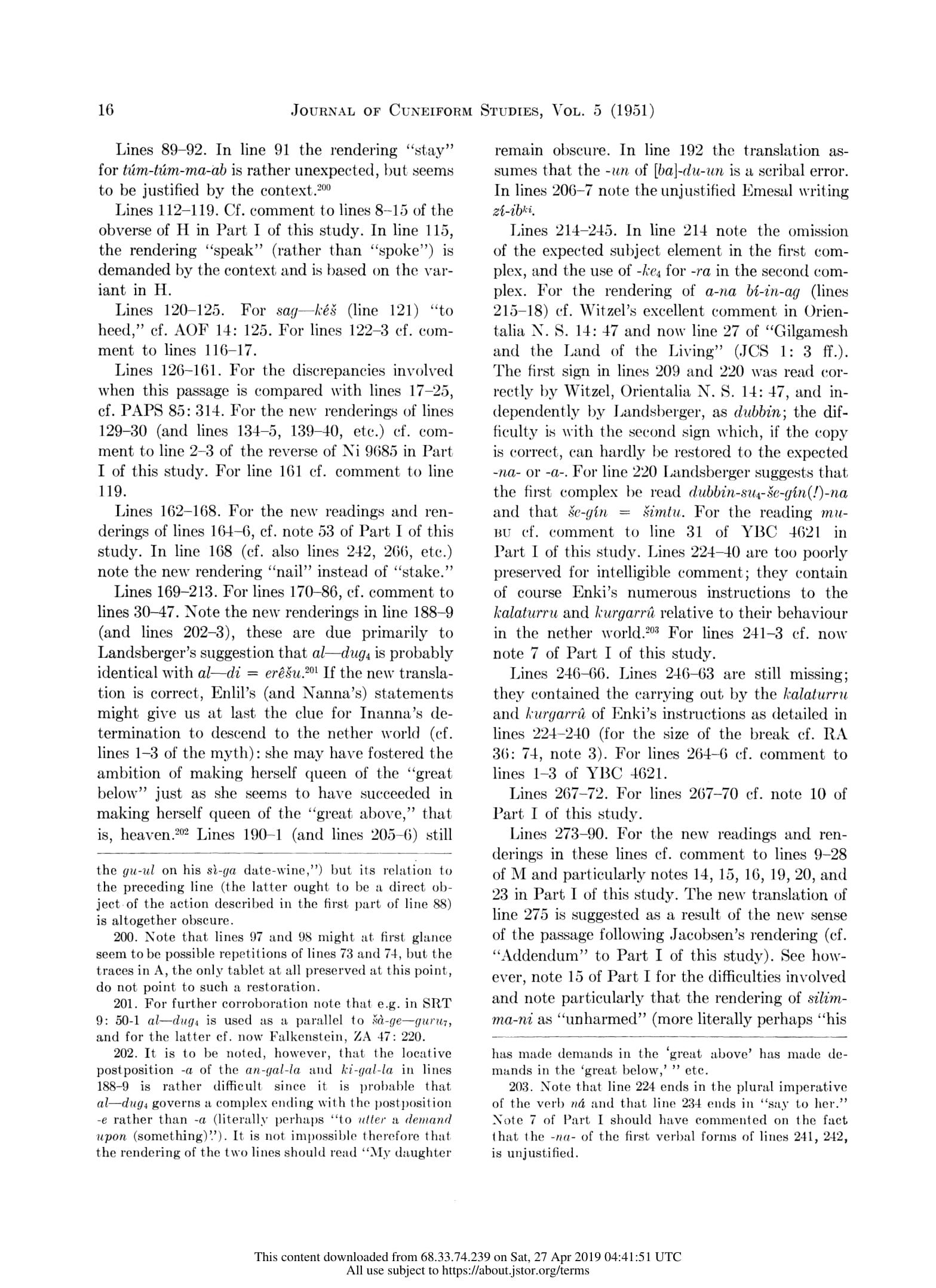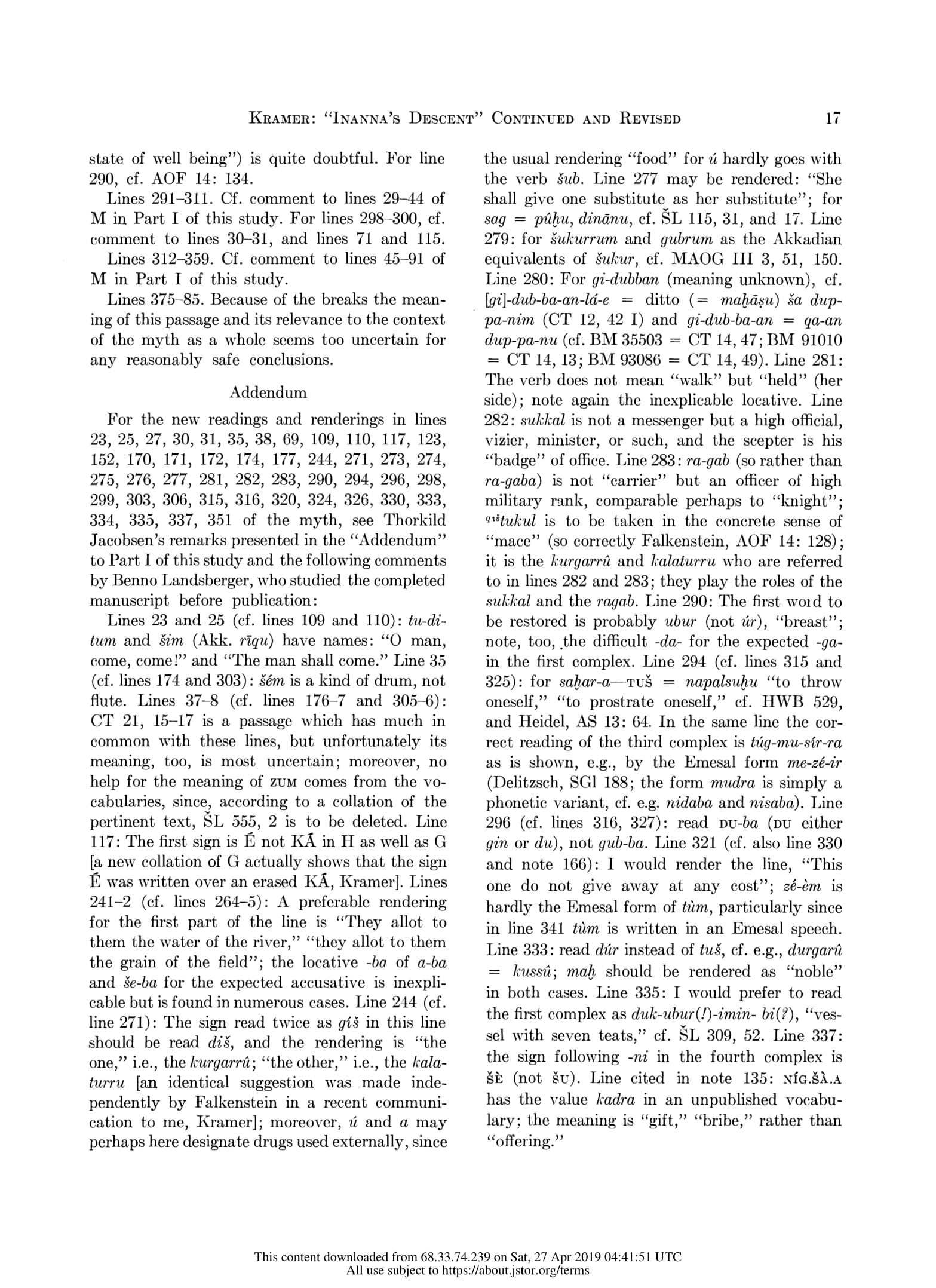About
This 1951 article features a translation of the YBC 4621 clay tablet by Samuel Noah Kramer. This tablet provided some 91 crucial lines for deciphering the Sumerian afterlife myth known as "Inanna's Descent to the Netherworld."
Source: OMNIKA
Access
Read for free
External sources
Primary
Myth
Inanna descends from the great above to the great below. She abandons several temples and heads for open country. She gives precise instructions to her companion—Ninsubur: Inanna says "if I don't return in three days, go to the temples and plead on my behalf." At the netherworld she enters and goes through seven gates before she is turned into a corpse. Ninsubur follows the instructions and tells Inanna's father Enkil what happened. He helps her by sending two a-sexual creatures to sneak in and bring her back to life. Once Inanna is alive she ascends while being escorted by demons from the netherworld. The demons allow her to trade her husband Dumuzi in her place.
Belief system
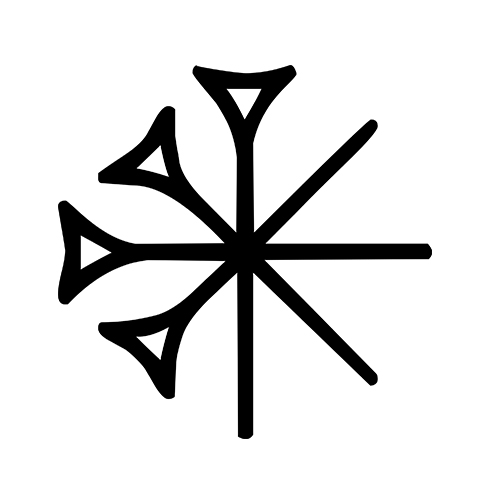
Sumerian religion refers to spiritual beliefs practiced from ca. 4500-1900 BCE in Mesopotamia, or modern-day southern Iraq. Many deities were diffused into other Mesopotamian cultures.
Deity

Inanna (Sumerian: 𒀭𒈹) was one of the oldest deities in the Sumerian pantheon. She was later adapted into the Akkadian pantheon of deities under the name Ištar.
Translation

"Artifact YBC 4621: English Translation by Samuel Noah Kramer" provides a partial English translation of a Sumerian afterlife myth named "Inanna's Descent to the Netherworld." This 1950 publication translates a then-newly discovered tablet in the Yale Babylonian Collection called YBC 4621. The tablet has been since renamed YPM BC 018686. Kramer translated all 91 lines of the cuneiform tablet, marking an important milestone for the full decipherment of "Inanna's Descent." Kramer was a well-respected Sumerologist.
Myths cited
It looks like only the main myth was referenced in this work.
Belief systems cited
It looks like only the main belief system was referenced in this work.
Artifacts cited
Other works
Journal article · 1951

This 1951 article features a translation of the YBC 4621 clay tablet by Samuel Noah Kramer. This tablet provided some 91 crucial lines for deciphering the Sumerian afterlife myth known as "Inanna's Descent to the Netherworld."
Journal article · 1942

"Sumerian Literature; A Preliminary Survey of the Oldest Literature in the World" is a 1942 journal article by Samuel N. Kramer. The article provided an up-to-date transliteration and translation of the Sumerian afterlife myth named "Inanna's Descent to the Nether World." The article, published in the Proceedings of the American Philosophical Society, also included ten plates, which contained sketches and photographs of cuneiform tablets that Kramer translated.
Journal article · 1937
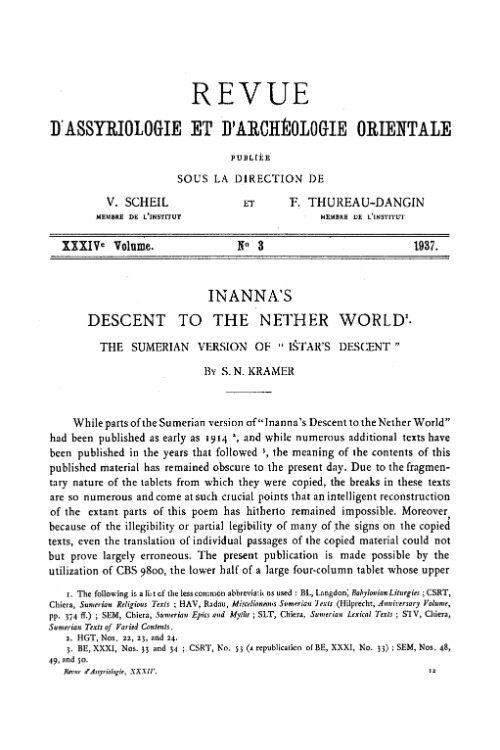
Kramer's 1937 publication of "Inanna's Descent" featured the publication of a tablet named CBS 9800. It provides 212 lines of the Sumerian afterlife myth, albeit with many lacunae.
Journal article · 1950

This 1950 article features a translation of the YBC 4621 clay tablet by Samuel Noah Kramer. This tablet provided some 91 crucial lines for deciphering the Sumerian afterlife myth known as "Inanna's Descent to the Netherworld."
Book · 1983
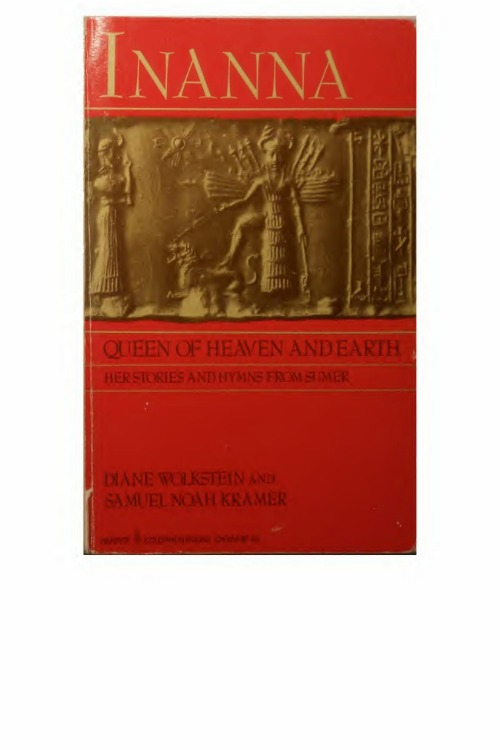
Wolkstein and Kramer's work on the Sumerian deity Inanna includes a contemporary and readable translation of the Inanna's Descent afterlife myth. Kramer is a Sumerologist who has devoted his career to translating the mythology related to Inanna. Wolkstein is a folklorist who contributed.
Library works
Website · 1997

The The Electronic Text Corpus of Sumerian Literature (ETCSL) is a digital project sponsored and hosted by the University of Oxford (Faculty of Oriental Studies). It contains ancient Sumerian literature that includes myths, proverbs, letters, king lists, and more. The project was started in 1997, led by Jeremy Black, and funding for it ended in 2006.
Seminar paper · 2019
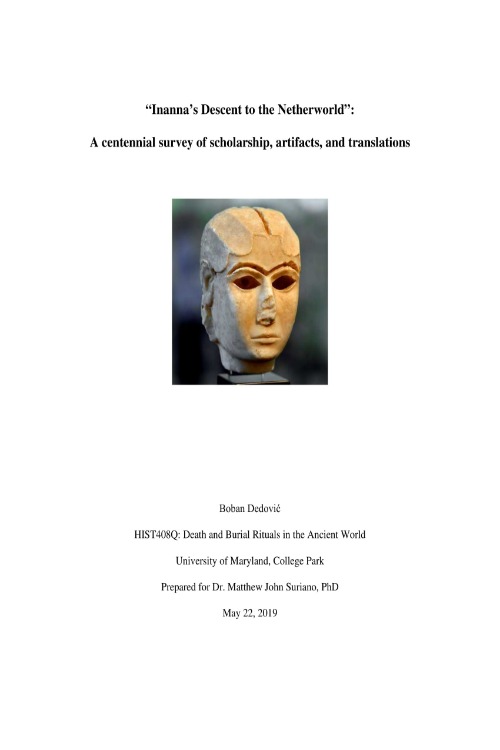
"Inanna's Descent" outlines all the scholarship related to the Sumerian afterlife myth named "Inanna's descent to the netherworld." The work contains a chronological survey of the scholarship, as well as an appendix of over forty artifact pictures and citation details. The work was produced by Dedović while he was studying death and burial rituals in the ancient world at the University of Maryland, College Park, MD.
Ph.D. dissertation · 1974
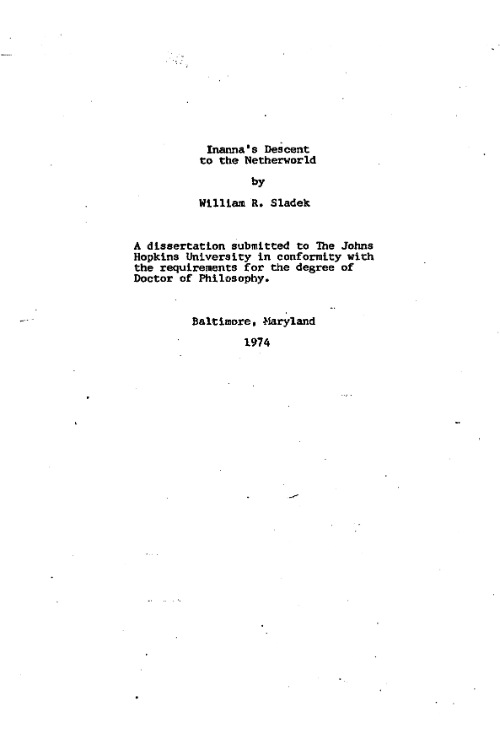
"Inanna's Descent" is a Ph.D. dissertation created by William R. Sladek in 1974. It is focused on "Inanna's Descent," a Sumerian afterlife myth, and includes a full translation and transliteration of the myth. Sladek published this work while earning his Ph.D. at Johns Hopkins University in Baltimore, Maryland, USA. His 1974 publication includes comprehensive translations of seven artifacts that were previously neglected from the full translation of the 412 line myth. His contribution to the scholarship of "Inanna's Descent" is very well-regarded by other cuneiform scholars, despite the fact that he did not actively continue publishing more work on the same topic.
Website · 1998

The CDLI is a joint project of the University of California, Los Angeles, the University of Oxford, and the Max Planck Institute for the History of Science, Berlin. The project is funded by various universities and donors in the hopes of cataloging, translating, and digitizing artifacts with in cuneiform script. The CDLI also releases online publications related to cuneiform.
Journal article · 1950

This 1950 article features a translation of the YBC 4621 clay tablet by Samuel Noah Kramer. This tablet provided some 91 crucial lines for deciphering the Sumerian afterlife myth known as "Inanna's Descent to the Netherworld."
Contributor
Cite this work
ChicagoKramer, Samuel N. "'Inanna's Descent to the Nether World' Continued and Revised. Second Part" Journal of Cuneiform Studies 5, no. 1 (1951): 1–17.
